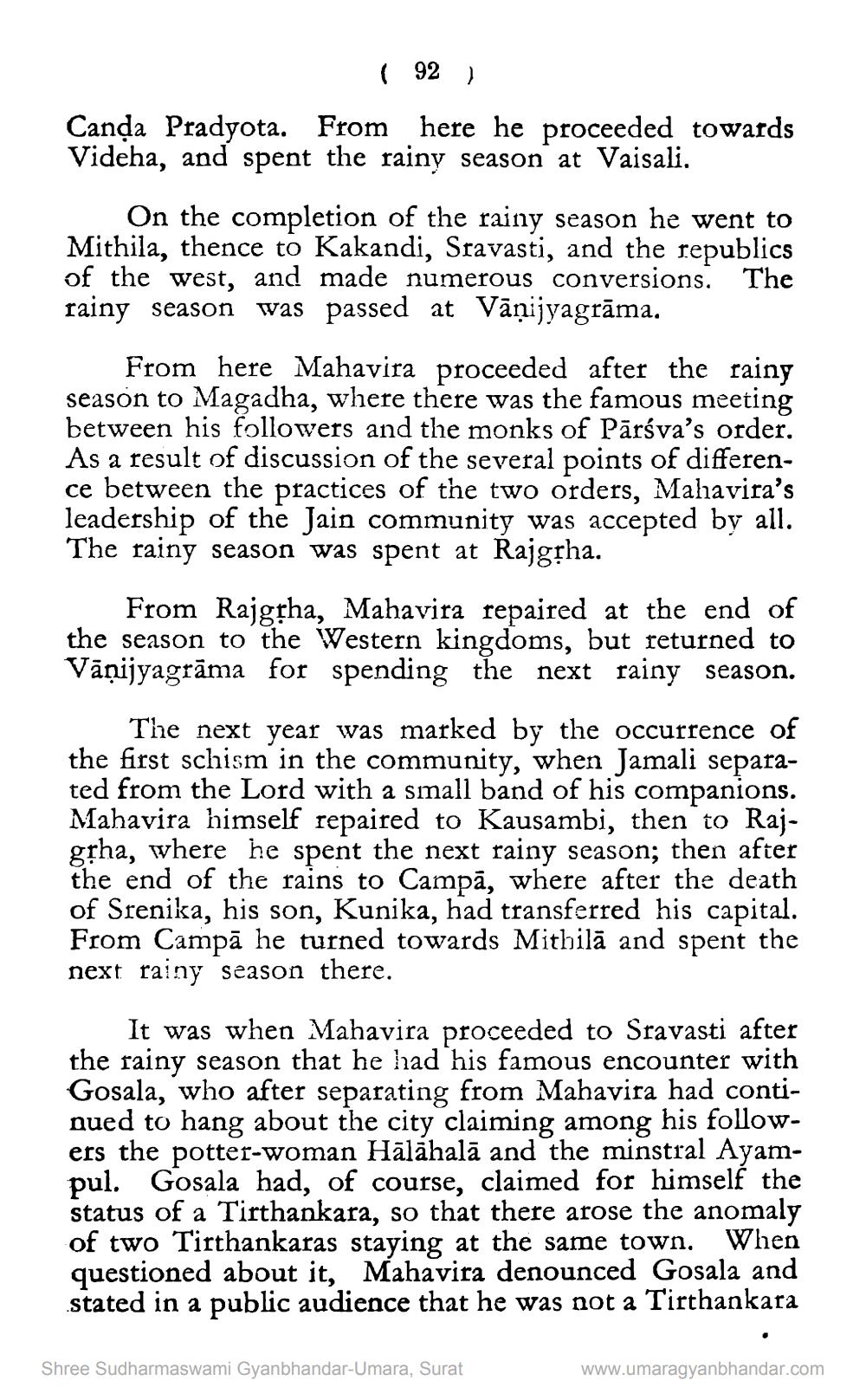________________
( 92 ) Canda Pradyota. From here he proceeded towards Videha, and spent the rainy season at Vaisali.
On the completion of the rainy season he went to Mithila, thence to Kakandi, Sravasti, and the republics of the west, and made numerous conversions. The rainy season was passed at Vānijyagrāma.
From here Mahavira proceeded after the rainy season to Magadha, where there was the famous meeting between his followers and the monks of Pārsva's order. As a result of discussion of the several points of difference between the practices of the two orders, Mahavira's leadership of the Jain community was accepted by all. The rainy season was spent at Rajgsha.
From Rajgrha, Mahavira repaired at the end of the season to the Western kingdoms, but returned to Vānijyagrāma for spending the next rainy season.
The next year was marked by the occurrence of the first schism in the community, when Jamali separated from the Lord with a small band of his companions. Mahavira himself repaired to Kausambi, then to Rajgpha, where he spent the next rainy season, then after the end of the rains to Campā, where after the death of Srenika, his son, Kunika, had transferred his capital. From Campā he turned towards Mithilā and spent the next rainy season there.
It was when Mahavira proceeded to Sravasti after the rainy season that he had his famous encounter with Gosala, who after separating from Mahavira had continued to hang about the city claiming among his followers the potter-woman Hālāhalā and the minstral Ayampul. Gosala had, of course, claimed for himself the status of a Tirthankara, so that there arose the anomaly of two Tirthankaras staying at the same town. When questioned about it, Mahavira denounced Gosala and stated in a public audience that he was not a Tirthankara
Shree Sudharmaswami Gyanbhandar-Umara, Surat
www.umaragyanbhandar.com




